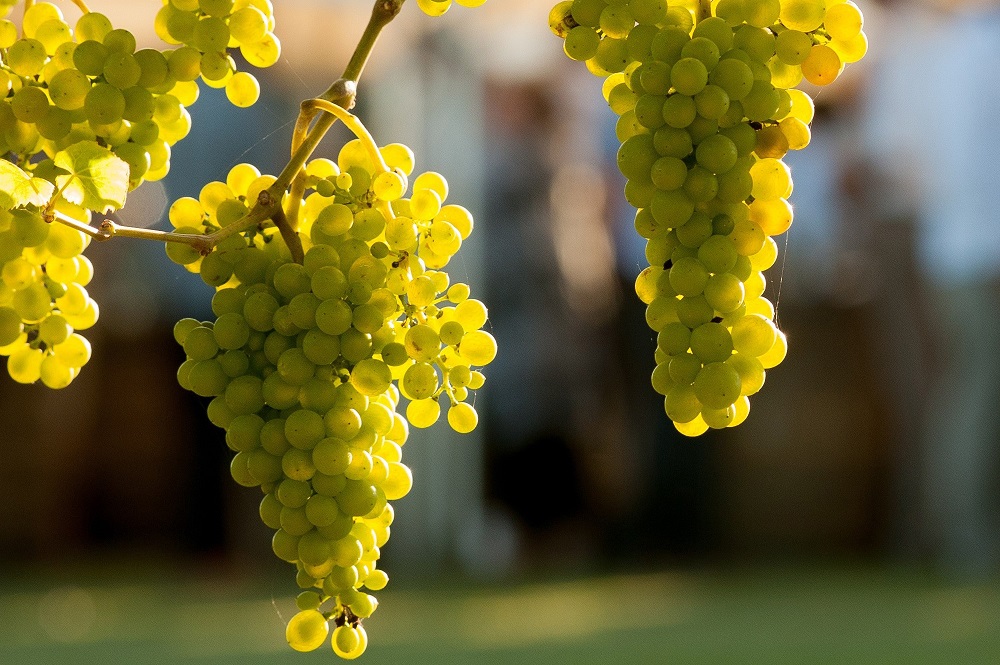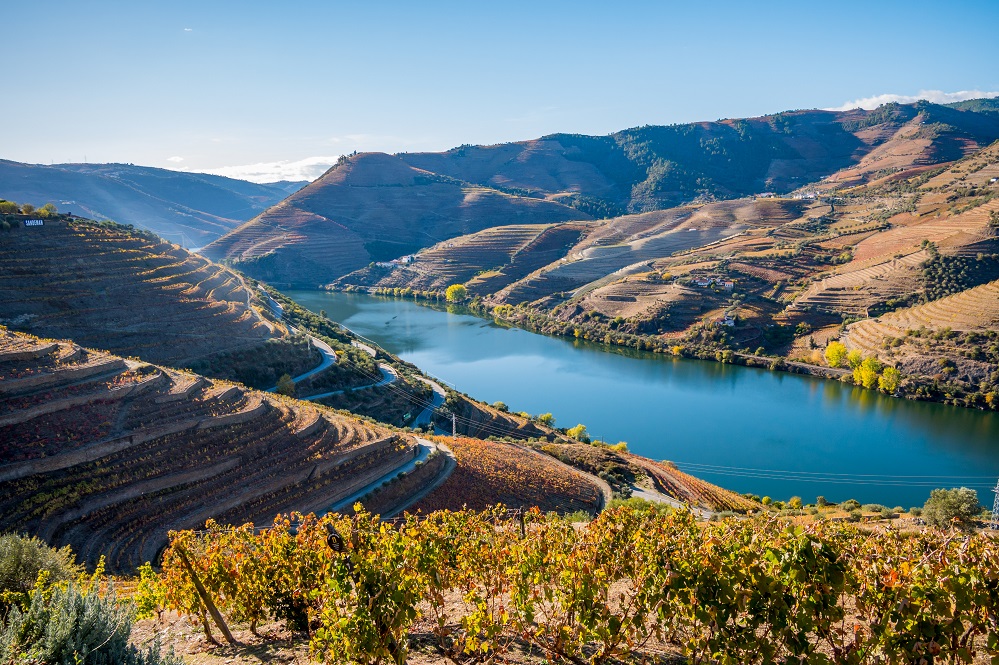
Ribolla Gialla Grape Variety: Becoming Mainstream
January 12, 2023
Unveiling the Mystery of Ribolla Gialla: An Ancient Italian White Variety's Fascinating Journey. Explore Its Origins and Revival!
By: James lawrence / Last updated: February 3, 2025
Estimated reading time: 8 minutes
Even a category as famous as Port can keep a secret or two. Indeed, most people imagine every bottle of this iconic fortified wine is a sweetened concoction of red grapes, sometimes aged for several decades before release.

Guide to Portuguese White Wine: Read more
But it’s not true. White Port – the local trade’s aperitif of choice – has also been produced in the Douro for centuries. To make this beautifully refreshing drink, you need a collection of pale-skinned grapes, including Malvasia, Vioshino, and Gouveio. The last variety is one of Portugal’s finest, often confused with the Veldelho grape (they’re genetically distinct). It has played a vital role in the nation’s table wine revolution, a movement that is transforming the lives of countless growers in the Douro Valley. In the 21st century, Gouveio has real teeth.
The Douro Valley, the home of Port, has been in the wine-growing business for over two millennia. After the Romans colonized the Iberian Peninsula in the 3rd century BC, viticulture became the mainstay of agricultural life in the Douro, extending into the plains of Castilla y Leon. However, chaos ensued after the Western Empire collapsed in 476 AD, leaving Spain and Portugal at the mercy of the Visigoths, invaders from the north. Yet their weak political organization did not last long; the Moors easily defeated the Visigoths after they arrived in 711 AD. In a relatively short period, the Moors conquered almost all of the peninsula except some isolated communities in the north. As Western Europe’s only major Muslim stronghold, the Al Andalus kingdom transformed the Iberian Peninsula’s cultural and social life.
Nevertheless, the Christian monarchs were determined to regain lands they regarded as stolen by the Muslim usurpers. In the 11th century, northern Christian kingdoms initiated a military reconquest of Al Andalus, recapturing Lisbon in 1147. Eight years prior to that event, the small county known as Portucale was granted independence by the monarch Afonso Henriques. This was the catalyst for the beginning of Portugal’s golden age: the kingdom expanded into the Algarve while famous sailors like Vasco de Gama explored the New World.
Then, in 1386, a major treaty between the naval powers of England and Portugal laid the groundwork for creating a new wine industry. Called the Treaty of Windsor, it encouraged many English traders to set up home in Portugal, as they were awarded unique privileges under its terms. And so, by the 15th century, Portuguese wines were a major feature in the cellars of the English upper classes. A trade war initiated by King Charles II in the 17th century was another milestone in the Douro’s history; after the king prohibited the import of French wine, merchants went to Portugal in search of viable alternatives. They found what they were looking for in the spectacular upper Douro Valley.
By the 18th century, the Vila Nova de Gaia district in Oporto was brimming with port lodges – this remains the major center of Port shipping today. Meanwhile, the Marquis of Pombal unveiled a modernization program in the 1700s that would completely revolutionize the Douro’s wine industry. In addition to undertaking Portugal’s first vineyard classification in 1757, Pombal established the region as Europe’s first official appellation d’origine contrôlée. Many of the original terraced plots dating from the 1600s survive in the hills above Regua – this is the original zone of production that expanded over the centuries out of Cima Corgo. During this era, the practice of adding grape spirit to the still-fermenting wine became normalized.
Initially, producers would add a small volume of brandy to the wine after it fermented; the sole purpose of this was to fortify and protect the wine for travel. However, this evolved over the years into a winemaking recipe that haltered the fermentation before all the sugar had been converted into alcohol. And so by the end of the 1700s, Port’s identity as a sweet fortified wine had been laid down.
Sadly, the 19th century was a period of great decline for the winegrowers of Portugal. Napoleon’s invasion in 1807 and the loss of Brazil left Portugal impoverished and divided. Absolutists and republicans struggled for power until 1910 a republican revolution seized power from the monarchy. Yet it could not last: the weakness of the economy, combined with a reactionary backlash to democracy, led to a military coup in 1926 and a long period of dictatorship at the hands of Antonio Salazar. However, the restoration of democracy in 1974 heralded a new era of prosperity. After centuries of being known only for Port, the Douro’s winegrowers have embraced table wine production. However, traditional styles like White Port remain important to the region’s economic output.
White Port, of course, relies on exceptional white grape varieties. Gouveio is such a grape: these small berries are packed with acid and aroma compounds, qualities that lend themselves to Port and table wine production. In addition, it is a relatively early ripening variety, which, if all goes to plan, will produce a good (but not excessive) yield of ripe grapes. However, Gouveio is not suited to wetter climates, as it is susceptible to fungal maladies like oidium. Fortunately, this is rarely an issue in the dry climate of the Douro Superior.
Gouveio has two principal roles in the vineyards of the Douro. One is to provide raw materials for the production of White Port, a traditional style that dates back hundreds of years. From one perspective, making white Port is a mirror image of its red cousin; the alcoholic fermentation is arrested with the addition of grape spirit, fortifying the wine to about 18% alcohol. The spirit kills the yeast before it can complete the fermentation, ensuring a degree of residual sugar is left in the wine.
However, unlike the top expressions of vintage and Colheita Ports, white Port rarely ages for more than five years before its release. The aim is to make a very fruity and fresh style of Port, ideal as an aperitif. Therefore, a growing number of White Ports are bone dry in a nod to the prevailing fashion. This is easily achieved by fortifying the wine at the end of the fermentation – just like Fino Sherry!

But there is another key difference. Standard Port requires red wines rich in color and extract – traditional houses still use the age-old foot-stomping method, filling their Lagares (concrete baths) with whole bunches. Teams workers then stamp up and down, breaking the skins. This juice is then macerated on the berry skins, extracting color, flavor, and tannin. White Port, however, uses grapes that are pressed almost immediately after entering the winery, with little – or no – skin contact. As a result, extraction of grape tannin is not a priority – quite the opposite.
Gouveio is also increasingly used to make exceptional dry white wine. Often (but not always) blended with Malvasia and Vioshino, it is a very malleable grape, open to widely different interpretations. These range from the single-varietal expression made by Serra Quinta das Maias to the oak-aged blend that is one of Quinta da Ferradosa’s greatest triumphs. Based on fruit harvested from low-yielding old vines, the grapes are de-stroked and gently crushed before they are sent to the pneumatic press.
This fresh must is then chilled before fermentation in new and one-year-old French barrique. It is then matured in wood for at least eight months, with regular lees stirring (battonage). According to the winery’s tasting notes, “Ferradosa Douro White has vibrant fruit in the nose, with touches of apricot, peach, and hints of some fresh tropical fruits. The oak is present with vanilla and a very slight smoky note.” We couldn’t agree more.
The finest vintage and Colheita Ports have no equal in the world of fine wine. Complex, age-worthy, and powerfully structured luxury labels such as Quinta Noval’s Nacional can improve in bottle for a century! Yet the category’s key stakeholders, mindful of the ongoing evolution in consumer tastes, are starting to embrace a different type of Port wine. Indeed, as the market for dry wines has expanded and the market for sweet wines has declined, it is apparent that the range of occasions where Port could be served has withered away.
As experts point out, Port is, in some ways, a relic of a bygone era. “Port’s biggest worry remains the fragility of its occasion as a relevant part of food and drink culture,” observes leading analyst Richard Halstead. “The traditional context in which Port was consumed has largely vanished from public life, aided greatly by the current emphasis on casual dining.”
However, innovative styles like dry white Port are helping to lure in a new generation of drinkers who may be allergic to formal dining. It is a gift to buyers and bartenders – a versatile drink that lends itself to the aperitif moment and mixology. The Fladgate Partnership, meanwhile, had the foresight to introduce a Croft rosé Port several years ago, which was soon followed by a rash of copycat brands. “We will continue to focus on the development of Taylor’s Chip Dry White Port, emphasizing its mixability with different styles of tonic water, something that the consumer has grown accustomed to via the boom in gin,” said Andrew Hawes, MD at Mentzendorff, a key distributor of fine wines in London. And so Port, that most classical of digestifs, is reinventing itself. Never let it be said that you cannot teach an old dog new tricks!
If you would like us to customize an exclusive luxury tour, contact us and let us know your travel plans. We offer luxury food and wine tours for private groups of a mininium two guests. In addition, all of our private, chauffeured tours are available year-round upon request.

